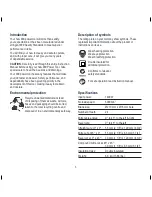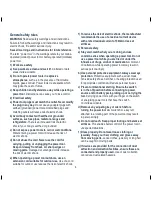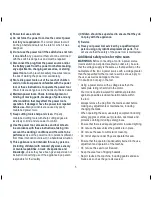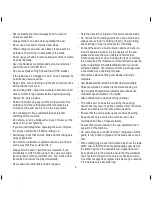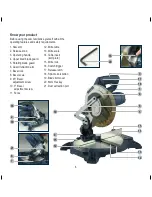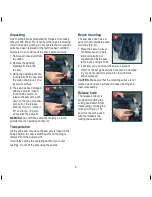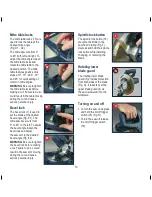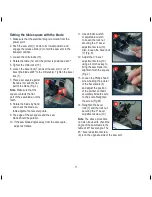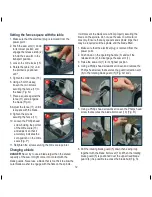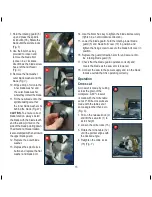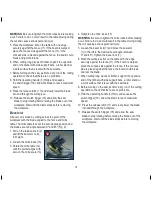
14
WARNING.
Be sure to tighten the mitre locks before making
a cut. Failure to do so could result in the table moving during
the cut and cause serious personal injury.
5. Place the workpiece flat on the table with one edge
securely against the fence (11). If the board is warped,
place the convex side against the fence (11). If the
concave side is placed against the fence, the board could
break and jam the blade.
6. When cutting long pieces of timber, support the opposite
end of the timber with side support bars, a roller stand or
a work surface that is level with the saw table.
7. Before turning on the saw, perform a dry run of the cutting
operation to check that there are no problems.
8. Hold the operating handle (3) firmly and squeeze
the switch trigger (16). Allow the blade to reach maximum
speed.
9. Press the release latch (17) and slowly lower the blade
into and through the workpiece.
10. Release the switch trigger (16) and allow the saw
blade to stop rotating before raising the blade out of the
workpiece. Wait until the blade stops before removing
the workpiece.
Bevel cut
A bevel cut is made by cutting across the grain of the
workpiece with the blade angled to the fence and mitre
table. The mitre table is set at the zero degree position and
the blade set at an angle between 0º and 45º (Fig. Z).
1. Pull on the release knob (2)
and lift the saw arm to its
full height.
2. Loosen the mitre locks (15).
3. Rotate the mitre table (12)
until the pointer aligns with
zero on the mitre scale (13).
4. Retighten the mitre locks (15).
WARNING.
Be sure to tighten the mitre locks before making
a cut. Failure to do so could result in the table moving during
the cut, causing serious personal injury.
5. Loosen the bevel lock (7) and move the saw arm
(1) to the left to the desired bevel angle (between
0º and 45º). Tighten the bevel lock (7).
6. Place the workpiece flat on the table with one edge
securely against the fence (11). If the board is warped,
place the convex side against the fence. If the concave
side is placed against the fence, the board could break
and jam the blade.
7. When cutting long pieces of timber, support the opposite
end of the timber with side support bars, a roller stand or
a work surface that is level with the saw table.
8. Before turning on the saw, perform a dry run of the cutting
operation to check that there are no problems.
9. Hold the operating handle (3) firmly and squeeze the
switch trigger (16). Allow the blade to reach maximum
speed.
10. Press the release latch (17) and slowly lower the blade
into and through the workpiece.
11. Release the switch trigger (16) and allow the saw
blade to stop rotating before raising the blade out of the
workpiece. Wait until the blade stops before removing
the workpiece.
Z
Содержание BN210
Страница 16: ...16 ...



